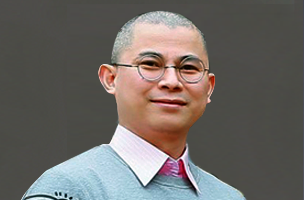Enforcement/Litigation in CAMBODIA
Bud & Prairie are profusely expert and experienced to advise and assist you with enforcement/litigation related matters.
1. Enforcement Mechanisms
1.1 Administrative Enforcement
- Ministry of Commerce (MoC): The MoC, through its Department of Intellectual Property, plays a key role in the administrative enforcement of IP rights. It handles complaints related to IP infringement, including those concerning trademarks and industrial designs. The MoC can conduct investigations and issue orders to stop infringing activities.
- Ministry of Culture and Fine Arts: This ministry is involved in the enforcement of copyright and related rights. It handles cases of copyright infringement and can take administrative actions to address violations.
1.2 Customs Enforcement
- Cambodian Customs: Customs authorities are responsible for preventing the importation and exportation of counterfeit goods and goods that infringe on IP rights. Rights holders can file with customs to request border measures, such as the detention or seizure of suspected counterfeit goods.
1.3 Police Enforcement
- Economic Police Unit: The Economic Police Unit, under the Ministry of Interior, handles criminal cases involving IP infringement, such as counterfeiting and piracy. They can conduct raids, arrest offenders, and seize counterfeit goods.
2. Litigation Process
2.1 Civil Litigation
- Jurisdiction: IP disputes are generally handled by the civil courts in Cambodia. The court system includes the Court of First Instance and the Court of Appeal. Complex or significant cases may be taken to the Supreme Court.
- Procedures: IP holders can file a lawsuit for infringement in civil court. The process involves filing a complaint, presenting evidence, and attending hearings. Remedies available in civil litigation include injunctions, damages, and orders for the destruction of infringing goods.
- Evidence: In civil cases, the plaintiff must provide evidence of infringement and prove ownership of the IP rights in question. This may include demonstrating that the IP is registered and showing how the infringement occurred.
2.2 Criminal Litigation
- Criminal Offenses: Certain IP violations, such as counterfeiting and piracy, can be prosecuted as criminal offenses under Cambodian law. Criminal litigation involves the public prosecutor and can result in penalties including fines and imprisonment.
- Prosecution: The Economic Police Unit or other relevant authorities may investigate criminal IP cases and forward them to the public prosecutor. The prosecutor will then decide whether to pursue criminal charges against the alleged infringer.
- Penalties: Criminal penalties for IP infringement can include fines, imprisonment, and confiscation of counterfeit goods. The severity of the penalty depends on the nature and scale of the infringement.
2.3 Alternative Dispute Resolution (ADR)
- Arbitration and Mediation: In addition to court proceedings, parties can resolve IP disputes through alternative dispute resolution methods such as arbitration and mediation. These methods are often faster and more cost-effective than traditional litigation.
- IP Dispute Resolution Centers: Cambodia does not have a specialized IP dispute resolution center, but parties can use general arbitration and mediation services available through various institutions.
3. Challenges in Enforcement and Litigation
3.1 Capacity and Resources
- Limited Resources: Enforcement agencies and courts may face limitations in resources and expertise, affecting their ability to effectively handle IP cases and conduct investigations.
- Training and Awareness: There is a need for ongoing training and capacity building for law enforcement, judicial authorities, and IP practitioners to improve the handling of IP-related cases.
3.2 Awareness and Compliance
- Public Awareness: Increasing public awareness about IP rights and the consequences of infringement is crucial for improving compliance and reducing violations.
- Business Practices: Businesses may need to adopt better practices for monitoring and enforcing their IP rights, including conducting regular audits and working with IP professionals.
3.3 Enforcement Effectiveness
- Implementation of Laws: Effective implementation of IP laws requires coordination among various government agencies, enforcement bodies, and the judiciary. Ensuring consistent application of IP laws and addressing gaps in enforcement can enhance overall effectiveness.
4. Opportunities for Improvement
4.1 Strengthening Legal Framework
- Legislative Updates: Ongoing updates to IP laws and regulations to align with international standards can improve the effectiveness of enforcement and litigation.
- International Cooperation: Enhancing cooperation with international organizations and neighboring countries can help address cross-border IP issues and improve enforcement efforts.
4.2 Enhancing IP Culture
- Education and Training: Providing education and training for IP rights holders, enforcement agencies, and the public can foster a stronger IP culture and improve respect for IP rights.
- Business Support: Supporting businesses in protecting and enforcing their IP rights through resources, guidance, and legal assistance can contribute to a more robust IP environment.
Enforcement and litigation of IP rights in Cambodia involve a combination of administrative, customs, police, and judicial processes. While there are challenges related to resources, awareness, and effectiveness, there are also opportunities for improvement through legislative updates, international cooperation, and enhanced IP culture. Strengthening these aspects will help ensure better protection for IP rights holders and promote fair competition in the Cambodian market.
For further information, please do not hesitate to contact us at bud-prairie@bud-prairie.com.
1. Patentability Search
Patentability search is also known as a novelty search, which helps identify whether or not an idea is novel and involves an inventive step (nonobvious). The most complete searches include all types of prior art to give an inventor or organization a comprehensive look at the technology landscape. A patentability search should be completed during the ideation phase, as well as prior to disclosure.
A patentability search is conducted by examining published patents that relate to your own invention to figure out whether your idea has already been patented. You can also see similar inventions, allowing you to improve and refine your own invention without infringing on someone else’s patent. And you can do all this before you have spent many hours and thousands of dollars on an idea that you can’t patent.
2. Freedom to Operate Search
A freedom to operate search (often abbreviated as FTO) determines how similar your product is to existing patents, and therefore how likely you are to infringe on a patent by making and marketing your invention. You may also see this type of search called a patent infringement search or right-to-use search.
Completing an FTO search early in the innovation cycle helps R&D teams design around existing patents. Later on, the results of the search can identify whether you may need to license other patents to bring your product to market.
3. State of the Art Search
Completing a state of the art search (also known as a product clearance or patent landscape search) allows you to examine the literature related to a specific industry, rather than around a certain technology, which may be applicable across industries. Using a state of the art search helps businesses find competitors and existing products within their field. These insights allow researchers, engineers, and leaders to make strategic decisions at any point within the innovation cycle.
4. Invalidity Search
To assess the strength of a specific patent, companies will use an invalidity search. This is also called a validity search. The results of this search determine whether or not the patent holder can claim infringement. They can also be used to decide licensing fees or value. If an invalidity search finds evidence in the form of existing, yet undiscovered, prior art, the patent should not have been granted and is unenforceable. This type of patent search is completed after a patent is granted.
5. Evidence of Use Search
Some organizations actively seek out products that infringe on their patent rights. This type of search is called an evidence of use search. To find these products, an organization or inventor will review similar patents and look for evidence the patent is utilized in a way that infringes on the searcher’s rights. Evidence of use searches happen after a patent is granted and as it matures.
6. Search Database
There are several databases in which patent searching may be done. Many databases such as USPTO, Google Patents, Free Patents Online, esp@cenet etc. are freely available, while other databases such as ThomsonInnovation, Orbit, Patbase etc. are available on the basis of a subscription. Each of these databases varies in terms of at least one of the following: Data Coverage, Search Engine, Interface.
• Google Patent Search Database. The Google search engine has revolutionized how people use the Internet. …;
• Patentscope. Patentscope is a free database put out by the World Intellectual Property Organization (WIPO)…;
• The USPTO Database…;
• Espace European Database…
The following are some of the largest and most popular patent office databases.
• Canadian Patents Database (CIPO)…;
• DEPATISnet (DPMA)…;
• Espacenet (EPO)…;
• JP-PlatPat (JPO)…;
• PatentScope (WIPO)…;
• U.S. Patent Assignment Database (USPTO)…;
• U.S. Patent Center (USPTO)…;
• U.S. Patent Databases (USPTO).
However, an inventor or applicant can also conduct their own patent search. The inventor or applicant has the advantage of often being more familiar with the art to which the invention relates, including having an understanding of the common knowledge held by persons skilled in the art and the relevant terminology.
Patent drafting is a part of how to patent an idea and is the process of writing the patent description and claims. It is at the core of every patent application. When the patent is issued or allowed, the draft serves as the specification part of the document. The patent applicants have to be more aware that depending on how well the complete specification is drafted and how precisely and correctly the claims describe the invention or the imaginary ‘boundary” is set, the easier it will be to defend it against third parties.
Normally, a patent specification covers the following parts:
• Field of Invention: It generally discloses a field to which the invention generally relates.
• Background: It discloses existing devices or methods related to the field of invention, broadly known as prior art. Background generally discloses prior art and limitations or disadvantages associated with the prior art.
• Summary of Invention: It (i) discloses the objectives of the invention, (ii) generally lists distinguishing features and advantages of the invention for which protection is being sought, (iii) summarizes the main features of the invention to be claimed, and (iv) also includes a broader explanation of the invention and briefly mentions the solution provided by the invention.
• Brief Description of Drawings (if any): If the invention includes any drawings, then this section includes a description of the drawing briefly such that a reader can get an overview of what could be disclosed by the drawing. The drawings are to be prepared in separate sheets as per different guidelines of different jurisdictions. The drawing sheets are filed with the patent specification.
• Detailed Description of Invention: It explains the different features of the invention in detail. Detailed description should be written such that a skilled person in the art can understand the invention solely after referring to this description. All claimed features and their interconnections, if any, need to be explained. In other words, all the claimed features need to be well supported in the detailed description.
• Claim(s): Claims are the most important part of a patent draft. Claims decide the scope of the protection which would be awarded to the inventor when the patent is granted. Claims are broadly divided into two categories, independent claim, and dependent claim. Every patent draft or patent application must contain at least one independent claim. Claims tend to change in course of the examination (narrower in most cases than the originally filed claims.
• Abstract: It is a technical summary of the invention. Generally, the Abstract should disclose the invention sufficiently to enable a person to perform a search for anticipation. The publication of a patent application includes publication of the abstract and representative drawing, if any.
• Drawings: Not all specifications have drawings. Such drawings, if any, would be prepared and submitted to the Patent Office in separate sheets. Different jurisdictions have different rules for allowable drawing sheets.
The significance of patent drafting and its impact on the patent protection should be conveyed to the SMEs, start-ups and inventors along with the information on importance of the patent protection in general. They should be informed that in case of any opposition or challenging the validity of their patent by a third party, a poorly drafted patent will be easily invalidated.
An opposition proceeding is an administrative process available under the patent law of many jurisdictions which allows third parties to formally challenge the validity of a pending patent application (pre-grant opposition), of a granted patent (post-grant opposition).
Once the patent application is published, an opposition may be filed within a certain time period prescribed under the applicable law. The opponent shall state the grounds for opposition and submit any evidence. If no opposition is filed during that period, the substantive examination will be carried out.
In the meantime, an applicant for a patent, any of whose claims has been twice rejected, may appeal from the decision of examiners to IP Vietnam, having once paid the fee for such appeal.
LET'S GET STARTED
Please fill in and submit the form for our assistance.




